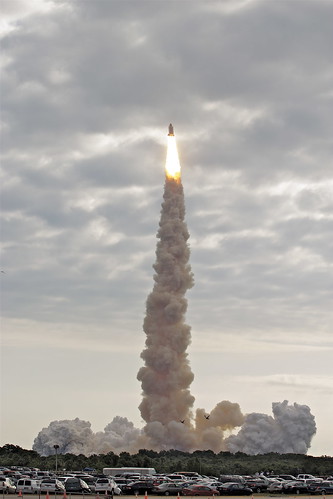The New York Times has a look back at the now gone era of the space shuttle, with one segment looking at Bucky Fullers long awaited image of the earth from space - A Look Back at the Space Shuttle.
DP: What do you feel as you see the shuttle program winding down?
WG: I feel a little sadness, a little bit, because I know what we can continue to keep doing with this shuttle. It would be nice if that other program was coming along a little bit faster, and we could kind of roll right from this program to the next one.
But I think we can still use that same work force to re-tool, build solid plans and then kind of get ready to go move forward.
The Apollo astronauts said that, basically by going to the moon, we learned more about the earth than we did by staying here. And those first images from the surface of the moon, of the earthrise, seeing the earth as a sphere, with this thin atmosphere, really pushes how fragile our world is, and how small our world is.
By continuing to push the technology envelope, we really learn a lot more about what’s really happening here on the earth.
DP: The space shuttle that we use to get to the space station is now retired. So how are we gonna get back and forth now?
WG: We’re gonna use the Soyuz spacecraft, which we’ve been actually using for crew rotations for about the last two years. We’ve focused the shuttle on doing the assembly activities.
DP: We rent space on the Russian aircraft?
WG: Yep. Our crews are trained in Russia to operate and help them fly the spacecraft.
DP: And doesn’t that bother anyone? I mean, doesn’t that make us sort of second-class space citizens?
WG: I don’t really look at it that way. Because if you look at the space station, it’s really an international facility. So there are Russian modules. There’s also a Japanese module. The European space agency has another module. And the U.S. has a large research facility. We provide power to the Russian side—our solar rays generate power, and provide it to the Russian side. And they do propulsion for us on the space station.
So when you ask me about transportation, it’s not different than all these other dependencies I have already. We are truly an international team. It’s not competition like it was before, where we’re gonna beat the Russians, or we’re gonna beat the Chinese.
There’s a control center in Moscow, a control center in Houston, a control center in Japan, and also in Europe. And we all work together to keep this space station flying, and operating.

No comments:
Post a Comment